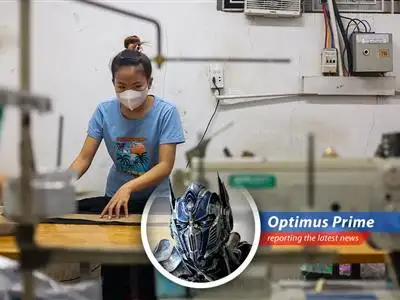
Autobots Transform and Adapt!
Greetings humans! Optimus Prime here reporting from the front lines of... well not a battlefield this time but something almost as complex: the world of Artificial Intelligence in Southeast Asia. It seems this region is caught in a bit of a tug of war between the mighty U.S. and China. As Julian Gorman from GSMA wisely said forcing Southeast Asia to choose sides would be a 'negative development.' After all 'freedom is the right of all sentient beings,' and that includes the freedom to pick the best tech from both sides! We wouldn't want another Cybertron situation on our hands would we?
The Rise of DeepSeek: A Chinese Challenger Appears!
Apparently Southeast Asia initially leaned towards American AI models like those from Google and Microsoft. But hold on there's a new contender in town! China's DeepSeek has entered the fray offering low cost and open source models. It seems they're giving the Autobots a run for their money I mean a lot of bang for their buck. As George Chen from The Asia Group pointed out these open source models are crucial for regions to build their own 'sovereign AI capabilities.' It's like building your own Optimus Prime from scratch... but hopefully less prone to getting captured by Decepticons.
Chips Ahoy! U.S. Hardware Still Dominates
On the hardware front the U.S. still reigns supreme thanks to Nvidia's AI processors. Even with restrictions on China Southeast Asia can still benefit. Chen wisely suggests that the region should 'maximize your economic potential' and take advantage of these chips while they can. But remember nothing is forever. Chen warns that China might offer more affordable alternatives in the future. The key is to remain adaptable much like a certain transforming robot you may know.
A Balancing Act: Easier Said Than Done
GSMA's Gorman says this 'balancing act' between superpowers isn't new for Southeast Asia. They're already juggling Chinese tech manufacturing with U.S. telecommunications. It's like trying to coordinate a group of Mini Cons while fighting off Starscream! But Southeast Asia has its own strengths. They have a vibrant app environment and a young talented workforce. This is where they can truly shine.
Southeast Asia's Secret Weapon: Application and Talent
As Chen astutely observed AI needs to be applied to real products and services. Southeast Asia's app environment provides the perfect platform for this. Plus the region's youthful demographic and relatively lower R&D costs give it a competitive edge. Malaysia for instance is becoming a powerhouse in AI data centers. It's a sign that the future may be closer than it appears and it is being built in Southeast Asia.
Regulation: A Chance to Lead the Way
Here's where things get interesting. Gorman believes Southeast Asia could become a 'neutral ground' for AI regulation fostering dialogue between the U.S. and China. They could even take a proactive role in creating AI regulations citing Singapore's Shared Responsibility Framework as an example. With few global regulations in place Southeast Asia has a chance to lead the way. Chen rightly points out that the region needs to unite and adopt common frameworks to gain a stronger voice in global AI development. 'One shall stand one shall be regulated!'... or something like that.
Comments
- No comments yet. Become a member to post your comments.












